How to Find Hidden Cameras
![]()
Hidden or inconspicuous cameras are fairly common in businesses with security concerns. Those black balls you see in ceiling corners or hanging from stems near checkout are undoubtedly watching and recording shoppers to make sure merchandise is being paid for.
Table of Contents
Are Hidden Cameras Really a Problem?
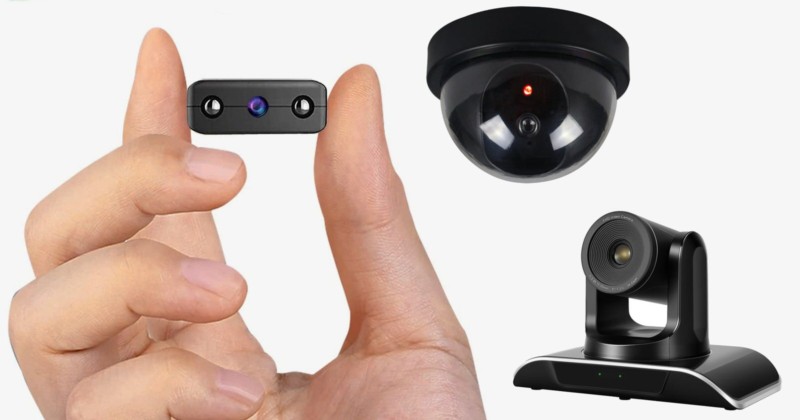
The average person might not feel the need to hide cameras to spy on others. Security is a different matter and an easily seen security camera can help discourage theft and vandalism. Hidden cameras serve different purposes, such as gaining evidence of wrongdoing, or secretly spying on others for nefarious reasons. Discreet cameras might be used in the office to catch thieves or find the source of corporate espionage, but hidden cameras are sometimes found in a hotel, inn, homestay (e.g. Airbnb), or bed and breakfast where you might expect privacy.
A 2019 IPX1031 survey of customer satisfaction with 2,000 participants found that one in ten said they had discovered a camera when staying at an Airbnb location. That’s an alarming number when you consider that for every person that found a camera, some simply didn’t check, or missed a well-hidden spy camera. The concept is disturbing enough that 58% of those polled said they were concerned about this issue.
![]()
There are also a constant stream of news headlines about people being arrested for placing hidden cameras in places such as bathrooms, locker rooms, and bedrooms.
This all goes to show that hidden cameras are a real problem in our modern society and it’s important to be aware that you might be seen and recorded at any given location. To help prevent this, there are some steps you should take to try to find and potentially disable spy cameras to regain your privacy.
Do a Visual Scan
The quickest way to find a hidden camera is to use your eyes. Look for a webcam or other small camera. Security cameras are usually larger and not hidden but might be tastefully tucked in a corner and are typically mounted near the ceiling. If someone is actually trying to keep the camera secret, visually scanning with your eyes might not be enough, however.
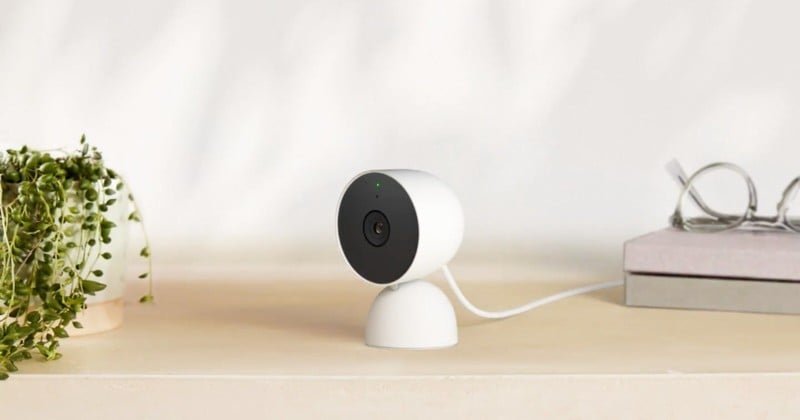
The lens needs to be uncovered for light to enter unless a two-way mirror is used, so to begin a basic, visual search, check for small, round black objects that look a bit like a hole or a hole covered with glass or plastic. A spy camera can be hidden inside common objects such as a clock, smoke detector, or even the old horror movie cliche of someone watching from the eyes of a painting, in this case, electronically rather than via secret passageways.
A hidden camera might have a power cable or video output cable connected. Pay attention to extra wires that don’t seem to have a purpose. You can also follow a cable and identify which device it connects.
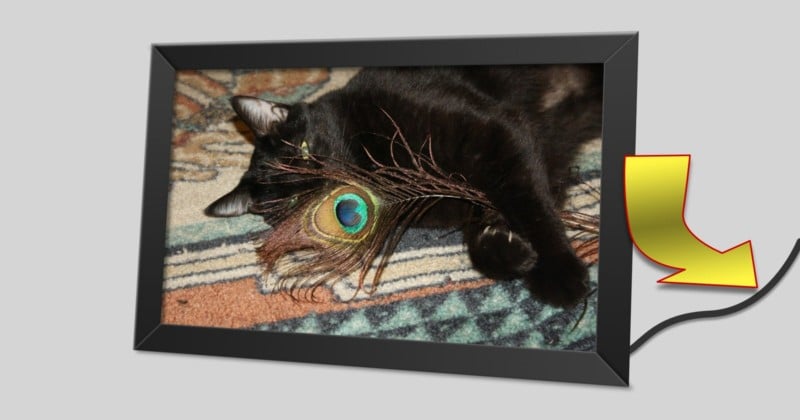
A cleverly disguised spy camera might be difficult to locate with only a visual scan, but it’s worth taking a few minutes when you arrive at a place where you expect privacy to check for obvious cameras.
Spy Cameras are not Webcams
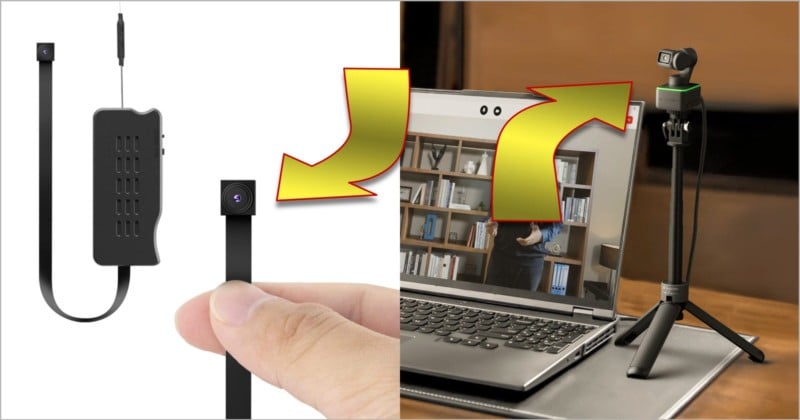
Webcams are easy to spot unless they’re well-disguised. The greater concern is with devices that are specifically designed to be hidden. Spy cameras can be incredibly tiny, measured in millimeters, making it easy to hide almost anywhere or tuck inside common objects.
While you can trace the wire to a standard webcam, a camera that’s meant to be undetectable could run on batteries and be placed in objects you wouldn’t ordinarily be suspicious of. The classic nanny camera in a teddy bear is a perfect example.
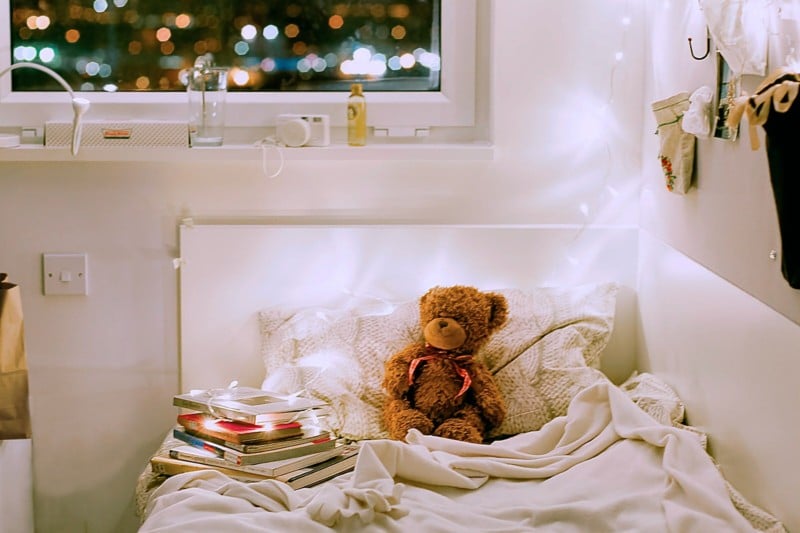
Dim light is a difficult task for a webcam, but a hidden camera might include infrared LEDs that invisibly illuminate a room making it possible to spy on nighttime activities. That means turning off the lights is not an effective way to keep from being seen.
Scanning with Your Smartphone
If a hidden camera doesn’t have a video output cable, it might be transmitting video wirelessly. It’s quick and easy to check for radio frequency broadcasts and some are even detectable with a smartphone. The ability to find Wi-Fi is built into your iPhone and Android phone but a list of Wi-Fi hotspots is not what we need in this case.
A Wi-Fi scanner app can find devices that are using the same network that you are. In the iPhone App Store, WiFi Guard is a free app that will list all devices that are connected to the same network that you are using. Seeing the name given to a device is not terribly helpful, since it can be called a thermostat or something equally innocuous to prevent suspicion.
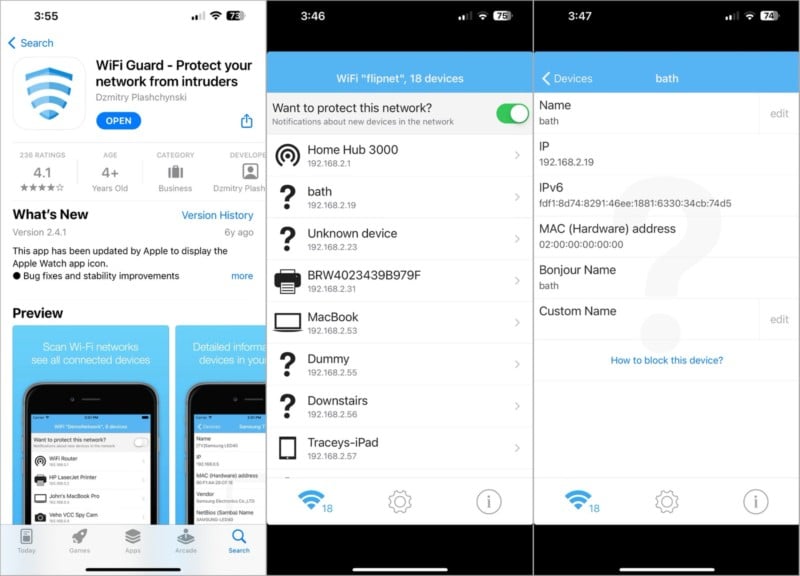
The Play Store has a similar, free Wi-Fi scanner app called Network Analyzer. It’s important to note that you won’t see a hidden camera if it’s connected to another network, and it’s relatively easy for someone that’s trying to be secretive to create a separate Wi-Fi network to reduce the chance the camera will be found.
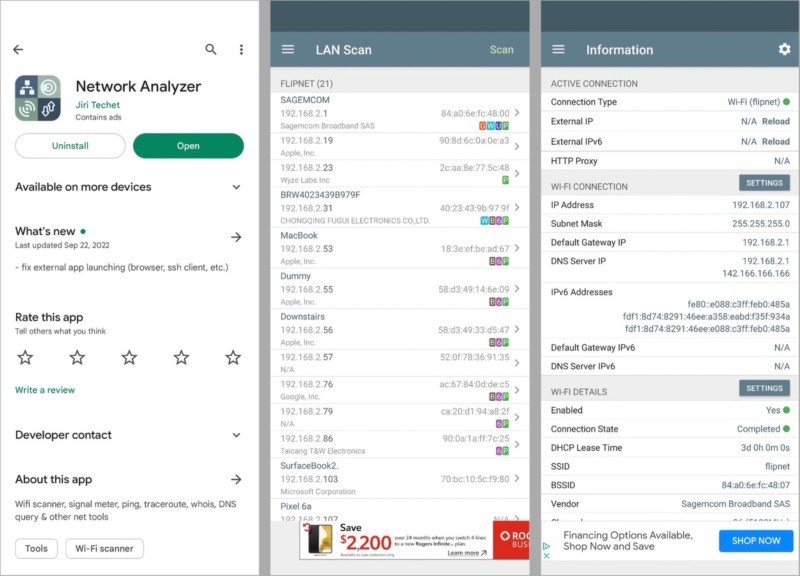
Bluetooth video transfer is slower but still possible. There are apps that check for Bluetooth devices as well. For the iPhone, LightBlue is a good, free solution. Bluetooth settings are a bit more useful since it lists available devices; however, it only shows what you’ve previously connected to or a Bluetooth device that’s in pairing mode.
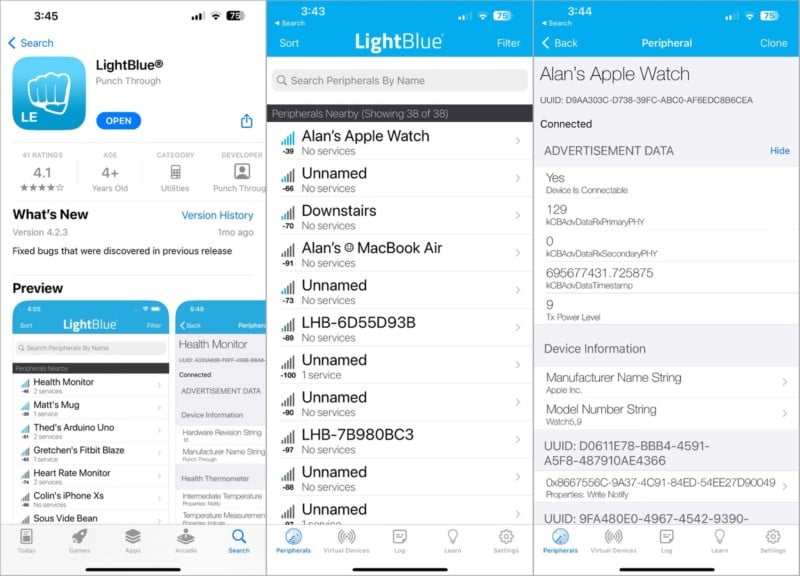
LightBlue is also available on Android as a free Bluetooth scanner. A list of nearby Bluetooth devices will be shown and you can check off your own phones, earbuds, action cameras, and other devices that are increasingly part of everyday life.
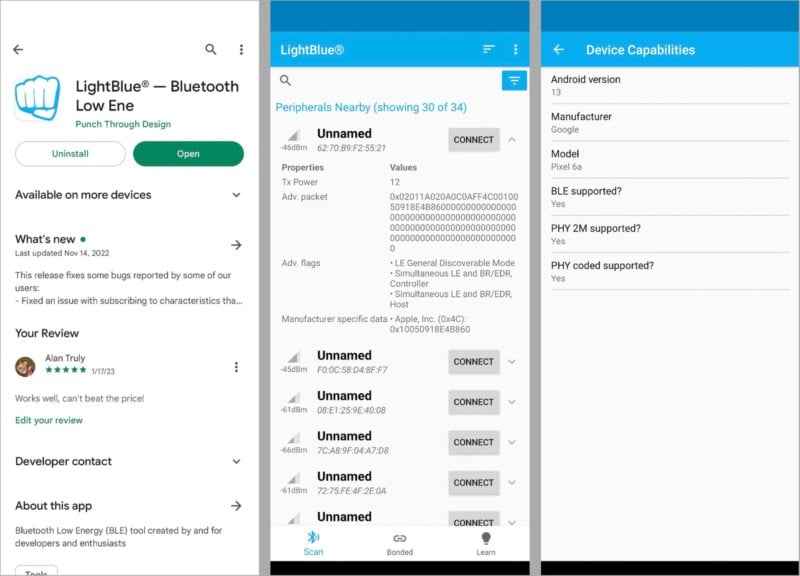
Seeing a suspicious device in the Wi-Fi or Bluetooth list doesn’t really help find a hidden camera but it’s useful as a way of making you aware of unknown devices that are within range. To physically locate electronic devices, a magnetometer is a handy tool and there are apps that let you use your smartphone’s compass to detect magnetic fields.
In the iPhone App Store, Magnetometer is a free app that lets you see a real-time view of magnetic force. In a room with few electrical devices, you might see a reading of 15 to 20 microteslas, but when your iPhone is brought close to a camera you might see a big jump in magnetic energy.
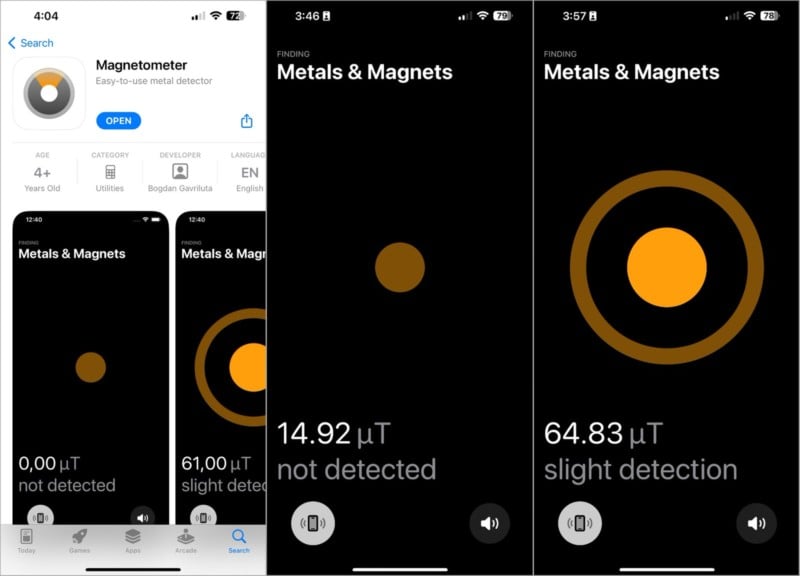
If you own an Android phone, you can download Detectify for free from the Play Store to check for magnetic fields. Note that a magnetometer will show increased magnetic energy near any electrical device and will also have a strong reading when placed near steel or other ferrous metals.
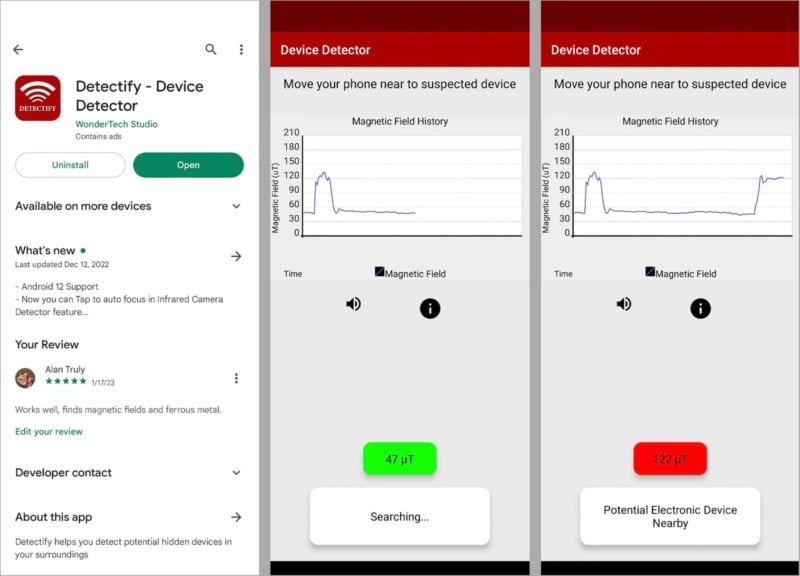
The strength detected will vary, depending on your phone, so rather than looking for a specific number of microteslas, check for sudden increases in the reading as you move the phone around.
Using technology to check for the presence of unknown radio frequency devices and following up with a sweep with a magnetometer is helpful, but you still need to use your eyes and sometimes lay your hands on an item to determine if there is actually a spy camera.
Checking with the Lights-Off
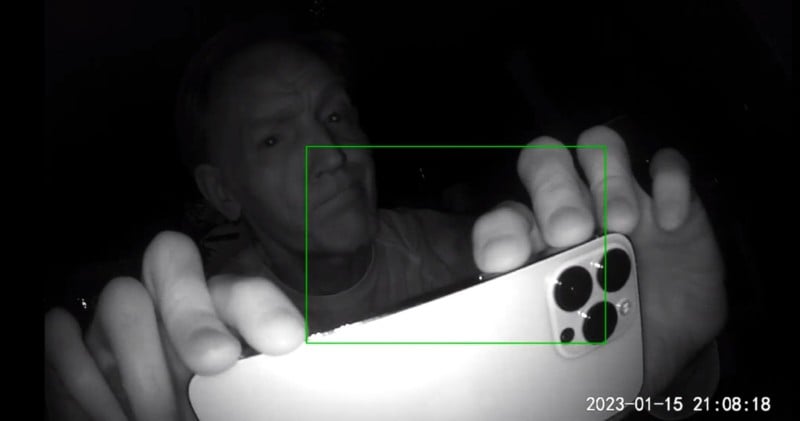
A less technically demanding way to locate hidden cameras is to dim or switch the lights off and shine a flashlight or laser pointer around the room. Most cameras will have the lens exposed to let in light and the curved glass or plastic lens will be very shiny and reflect light back strongly. You can use a regular flashlight or the flashlight feature of your smartphone and look for a glint or sparkle as you move the flashlight around.
![]()
Some spy cameras are designed to see in the dark using infrared image sensors. A high-end IR camera can detect body heat, but most simply use low-cost infrared LEDs to illuminate the room with light that’s invisible to the human eye. Thankfully, your smartphone can probably see this light.
With the lights off and curtains drawn, any hidden cameras that have night vision capability will switch on their IR LEDs. Open your smartphone’s camera app and look around the room while watching the viewfinder. If any light source is visible that you can’t see with your own eyes, it might be coming from a spy camera. Switch on the lights and examine that area more closely.
IR LEDs are common in remote controls. That means smart home devices, like thermostats, might be sending out IR pulses to control the heater or air conditioner. A TV remote should only send an IR signal when you press a button. VR gear uses infrared lights and cameras to track the movement of the headset and controllers, so VR base stations (also known as lighthouses) might keep their IR LEDs active as long as they are plugged in.
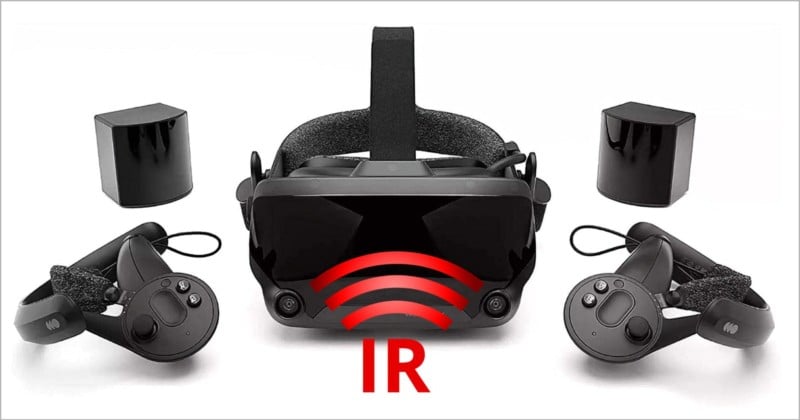
Where to Look for Hidden Cameras
There are numerous ways to hide a small camera and those designed for spying are particularly small. Some separate the recording and battery components and connect to the camera via a cable so only a tiny lens needs to be exposed.
If a camera is hidden within an electrical device, cables won’t look suspicious and a magnetic field will be disguised by that of the larger device. Inaccessible areas like wall or ceiling vents could be another location worth checking. A camera’s black lens can be hidden in any black spot or hole.
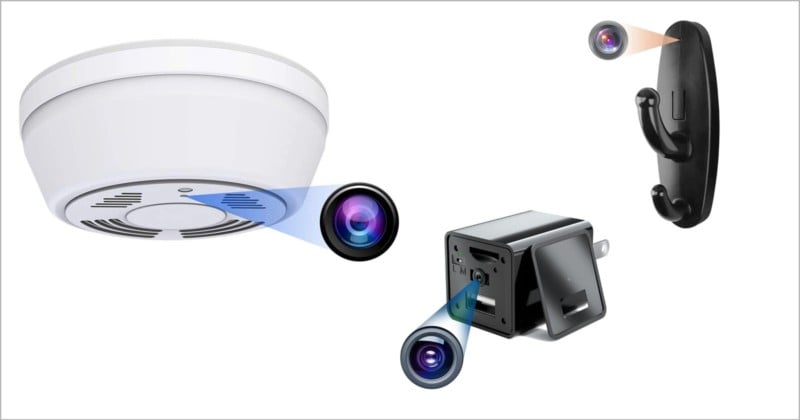
A well-hidden camera might be tucked into a dark nook within furniture, between tchotchkes on a shelf, or in a wall hanging. Smoke detectors, USB chargers, and clothes hooks seem to be popular disguises for hidden cameras filling the top search results on Amazon at the moment.
Unfortunately, cleverly-designed spy cameras can be hidden in plain sight and appear to be ordinary objects. That means you need to scan with a flashlight or electronic detector to narrow down potential hiding places before examining the objects in question more carefully.
What Are Spy Cameras Disguised As?
A search for “hidden camera” on Amazon reveals a selection of the most popular products on the market.
One of the most common forms of hidden cameras at the moment is the USB charging brick camera. Since people commonly have these bricks plugged into walls for charging their phones and devices, unsuspecting subjects may not realize that a brick is actually a spy camera that is secretly shooting photos or videos.
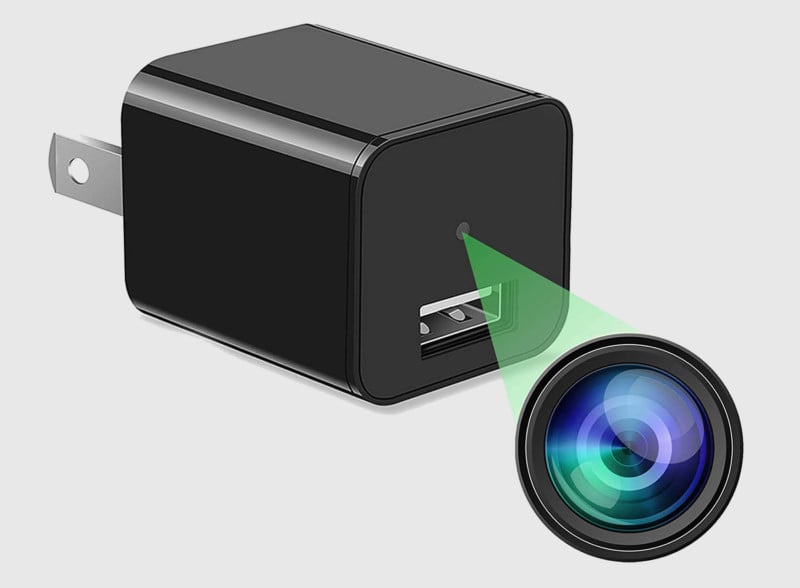
Another top spy camera is one designed to look like a portable battery charger, which may look innocuous when left on a desk or shelf.
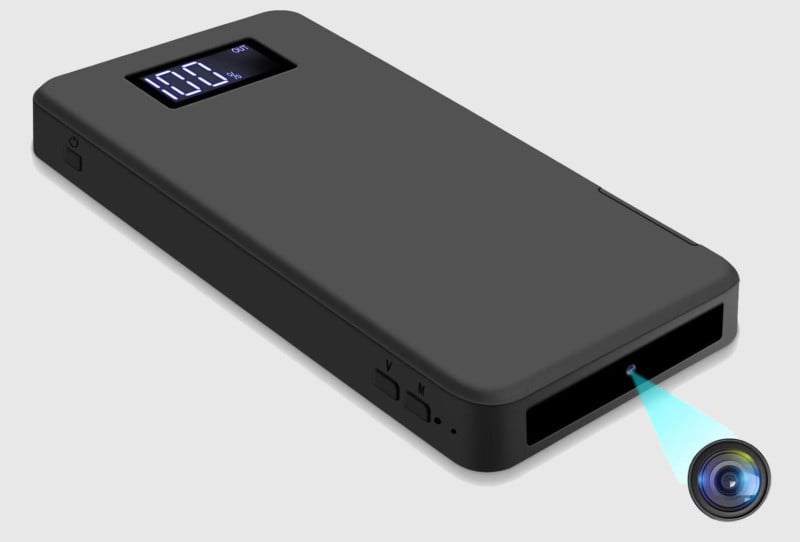
Other examples of common spy camera designs include smoke detectors…
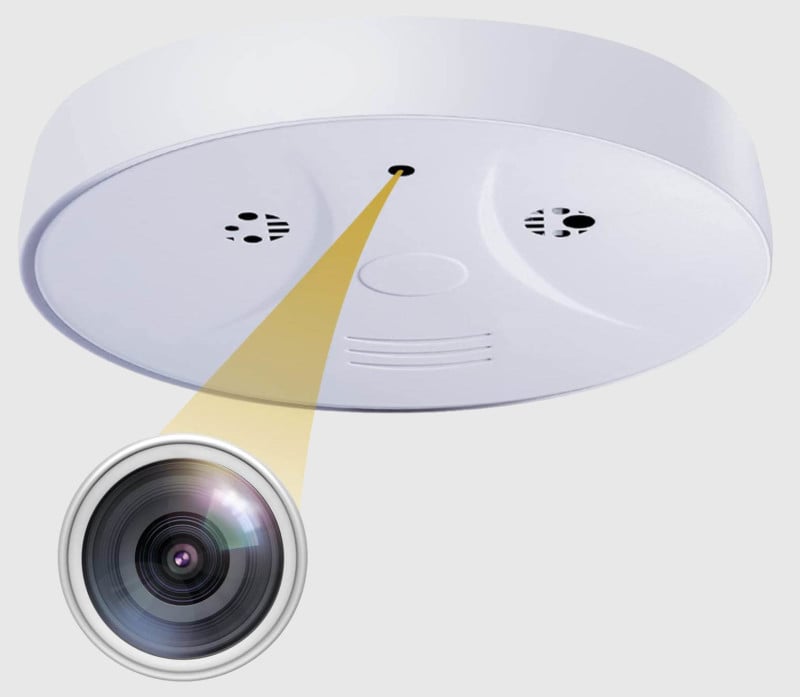
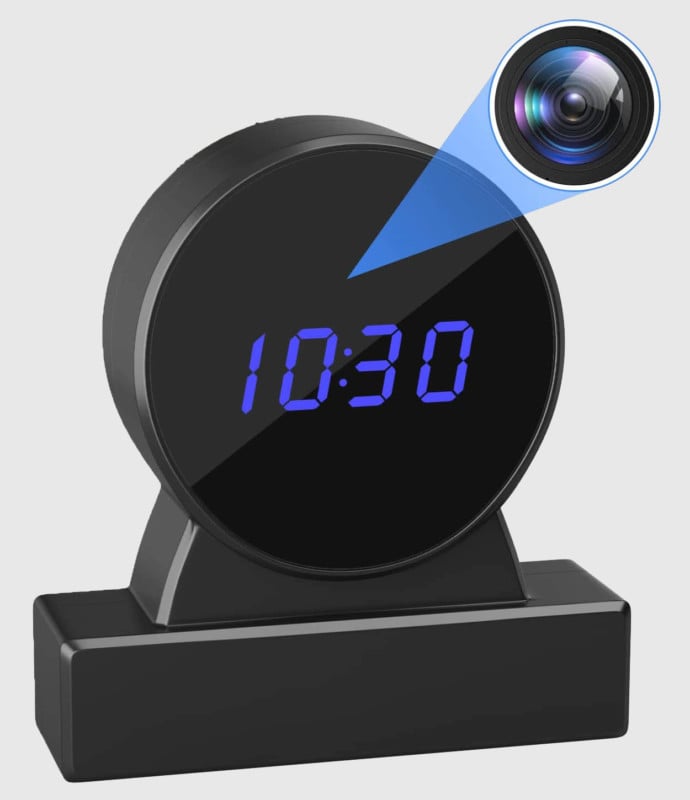
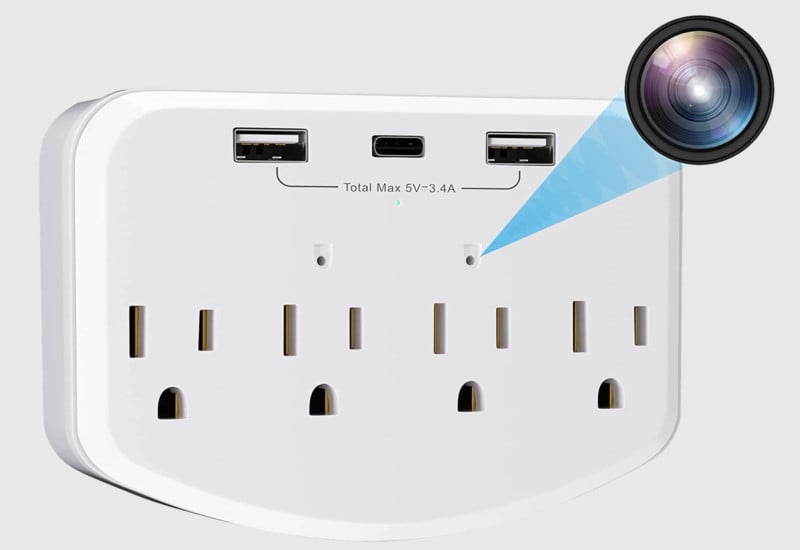
…and even car remotes.
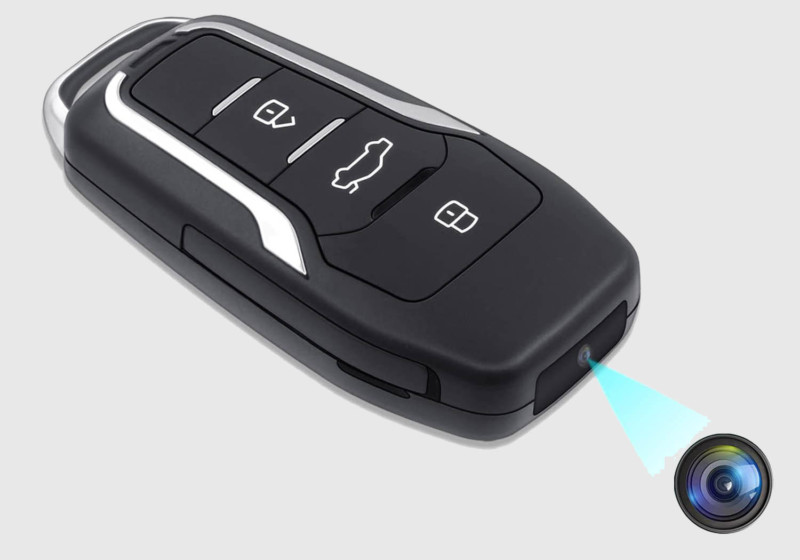
While all of these products are marketed as being for innocent reasons such as monitoring a home for security or checking on the wellbeing of children, they are also purchased and used by unscrupulous people for nefarious reasons such as invading the privacy of others.
How to Disable a Hidden Camera
If you find a camera while staying at a rental property, it might make you angry that someone is invading your privacy, but it’s unwise to damage the camera or any cords connected to it. If the camera is in an area that isn’t usually considered to be a private space, it could be legal for the owner to place it there. The owner has a right to protect their property and security cameras might also protect the guests and their belongings.
![]()
To be clear, it isn’t legal to place a hidden camera in a room that’s typically considered private, such as a bathroom or bedroom. The living room, dining room, and other public spaces are not protected from surveillance, but their presence should be made clear to the guest.
If you are renting the space, unplugging equipment might alert the owner that the camera is offline and could violate the terms of your rental agreement. Instead, draping a cloth over the camera or placing an obstacle in front to block its view could quickly restore your privacy while protecting you from the consequences of unplugging or damaging the camera equipment.
If you think the property owner is breaking the law, you should take photos that show the specific location of the camera, where it’s placed in the room, and how it’s hidden or disguised. If it isn’t immediately obvious that what you are showing is a spy camera, it’s a good idea to capture screenshots of any evidence you have of the spy camera’s presence, such as Wi-Fi, Bluetooth, and magnetometer readings away from the device and near it.
Rather than posting this information in a review or sharing it on social media, call the police and report it. Legal action is the most effective way to address this abuse of your right to privacy and it helps to protect others from this same situation happening again.
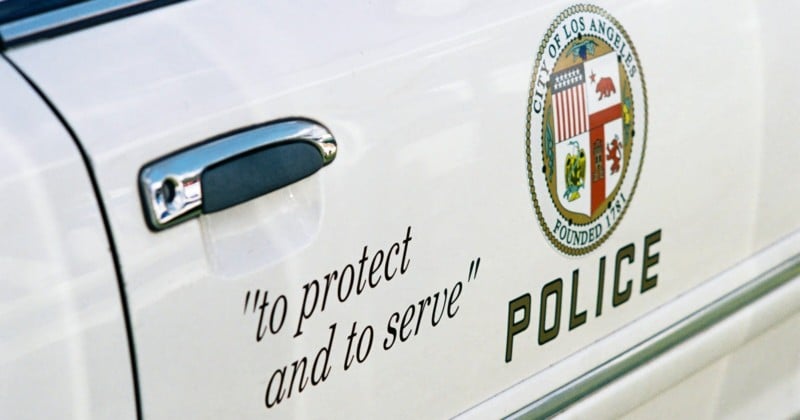
Have Fun, but Stay Alert
When you are taking a holiday or enjoying a trip, the last thing you might want is to do extra work, like searching for hidden cameras. Unfortunately, that’s a reality of modern life. Thankfully, technology can also assist with protecting yourself and the smartphone in your pocket might be all that you need to identify a potential spy camera and locate it. Then you can truly relax and have fun without any concern about your privacy.
Image credits: Header illustration photo from Depositphotos